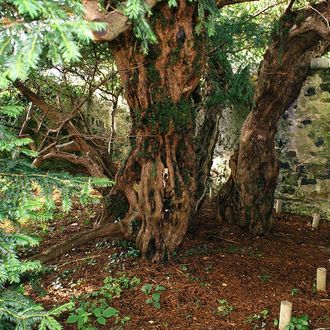
Local legend says Pontius Pilate used to play under the Fortingall Yew in Scotland more than 2,000 years ago; others estimate it could be up to 5,000 years old. Either way, the tree appears to be changing its biological sex, and scientists aren’t quite sure why.
The tree has always been considered “male” because it produces pollen, rather than berries, which is typically the role of a female tree. But just this year, researchers at the Royal Botanic Garden in Edinburgh discovered a cluster of berries growing on the tree.
“Yews are normally either male or female, and in autumn and winter sexing yews is generally easy,” Dr. Max Coleman, science communicator at the Royal Botanic Garden, told the National. “It was, therefore, quite a surprise to me to find a group of three ripe red berries on the Fortingall Yew when the rest of the tree was clearly male.”
Coleman has only seen a change like this in a few yews, but oddly enough, the switch always tends to happen in upper branches rather than throughout the entire tree. In the case of the Fortingall Yew, a single branch in the crown of the tree is now acting female, Coleman says.
“It’s thought that there’s a shift in the balance of hormone-like compounds that will cause this sex change,” he explains. “One of the things that might be triggering it is environmental stress.”
The new berries have been collected and will be part of the Botanic Garden’s new conservation project.





























